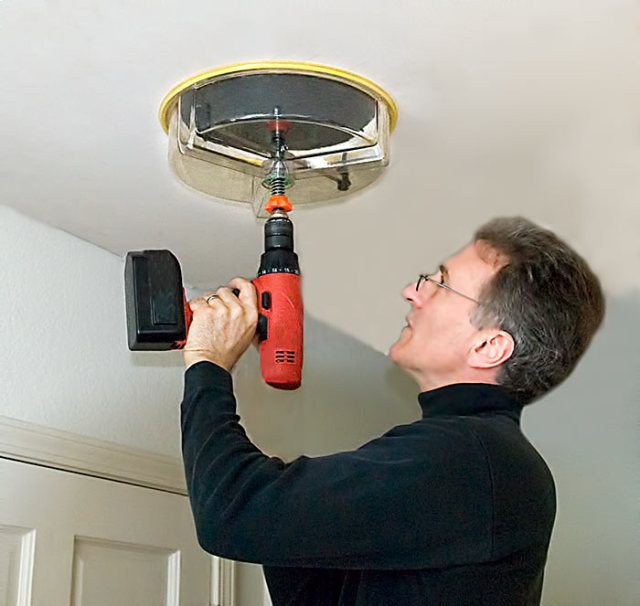Note: this article is reprinted in its entirety with permission from the blog of the nice folks at Hole Pro. We get a lot of customers with questions in regards to cutting the holes for recessed lighting. Often, mistakes are made-some of which are very difficult to correct for. We think you will find their article very helpful-particularly if you have a plaster ceiling (be it new or old). Be sure to visit their web site for more of their product information. Although we don't have any holes to cut right now, we're trying to think of excuses to buy one of these (Hole Pro)! Thank you to Hole Pro for letting us reprint their article.
Adjustable Hole Saw Cutter Kit
There are many times when one or more holes need to be made in a plaster ceiling, whether for recessed light cans, audio speakers, a heating or air conditioning duct, or to add a ceiling fan. Plaster ceilings have been done in different ways in different parts of the country and at different times. After 1950 most plaster ceilings have a metal lath. In prior years the lath could be metal, chicken wire, or wood. In many cases the nails that originally held the pieces of lath in place have largely disappeared from corrosion over the years.
We recommend treating the plaster ceiling hole cutting operation as a two stage process. First cut the plaster and remove the plug. Second cut the lath using the hole in the plaster as a guide. The Hole Pro adjustable hole cutters make a clean straight cutout hole in the plaster for the can light or ceiling speaker and with the straight edge the grill or trim rings will sit flush against the surface of the ceiling. With the circular scoring motion of the tungsten carbide cutting blades the two layers of the plaster are not likely to separate and cause a crack in the ceiling (which can be very expensive to repair).
The best tool for cutting the lath depends upon the material used. For standard metal lath a carbide grit reciprocating saw blade works very well. For wood lath a fine tooth bi-metal reciprocating saw blade usually works the best. For chicken wire it is best to use diagonal cutting pliers (dikes) or snips to cut the wire lath.
In theory it would be simpler to use a continuous edge tungsten carbide rim grit hole saw and cut through all three layers. Their good reasons why this is often not the case. It comes down to cost. Each size of carbide grit hole saw costs between $45 and $80 depending upon the brand and the hole saw only works for one size hole. The sizes provided by all manufacturers (Milwaukee, Greenlee, MK Morse, Lenox) are limited to 3-3/8″, 4-3/8″, 5-3/8″, 6-3/8″, 6-5/8″, 6-7/8″. With more than 20 common recessed can light cutout sizes needed the sizes available are seldom going to work.

